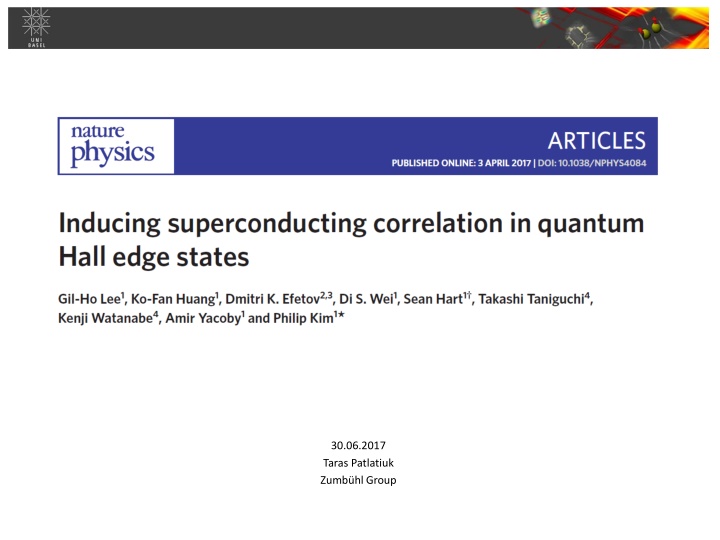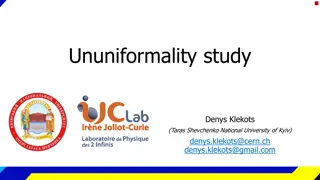
Exploring Crossed Andreev Conversion for Superconductivity Induction in 2DEG Systems
Discover the potential of Crossed Andreev conversion in inducing superconductivity in 2D electron gas (2DEG) systems, touching upon topics such as Schottky barriers at SC/semiconductor interfaces, local Andreev processes, and the emergence of Majorana zero modes. Dive into the complexities and possibilities of non-Abelian zero modes and the interplay of various phenomena in the realm of superconductivity.
Download Presentation

Please find below an Image/Link to download the presentation.
The content on the website is provided AS IS for your information and personal use only. It may not be sold, licensed, or shared on other websites without obtaining consent from the author. If you encounter any issues during the download, it is possible that the publisher has removed the file from their server.
You are allowed to download the files provided on this website for personal or commercial use, subject to the condition that they are used lawfully. All files are the property of their respective owners.
The content on the website is provided AS IS for your information and personal use only. It may not be sold, licensed, or shared on other websites without obtaining consent from the author.
E N D
Presentation Transcript
30.06.2017 Taras Patlatiuk Zumb hl Group
Motivation Inducing superconductivity in 2DEG Non-Abelian zero modes Crossed Andreev conversion
Device Schottky barriers at the SC/semiconductor interfaces Graphene: Ohmic contacts to SCs hBN-encapsulation: high- mobility, QH effect at smaller field SC: NbN, ??2~25 ?, ??= 12 ?
SC contact transparency Local Andreev process ??? - probability of each Andreev reflection ???= 60 ? no QH even at ? = 14 ? SC: NbN, ??2~25 ?, ??= 12 ? BTK theory, ? = 0.18(barrier strength)
Negative non-local voltage AES CAC Andreev edge state (AES) Crossed Andreev conversion (CAC) For ? ? and ? ??/ CAC corresponds to two non-Abelian anyons in resonance with QH edge states
Temperature dependence ??,?? - onset critical temperature ???? - finite resistance of the NbN electrode ????~250 (4%) ??(? = ??) - finite SC/graphene contact resistance net contribution of CAC process
Temperature dependence ?? - changes (current-bias scheme) ???= ?? ??= /2?2
Bias dependence Negative non-local signal: ballistic electron transport viscous electron backflow ???> : Andreev process supressed ??= 2 ?? /? BCS-type temperature dependence on : ?? - related to superconductivity
Width of superconductor SC coherence length ( ?) ? ? hole tunnel through SC ?: 50 to 600 nm ??,0 - max. CAC efficiency (W = 0) clean limit dirty limit ??? ??,???~ 640 ???~0.1
Conclusion Crossed Andreev conversion at = 2 = 1 state possible host of Majorana zero modes CAC at = 1 enabled by large spin-orbit coupling (NbN)
DOS of graphene Bilayer graphene


